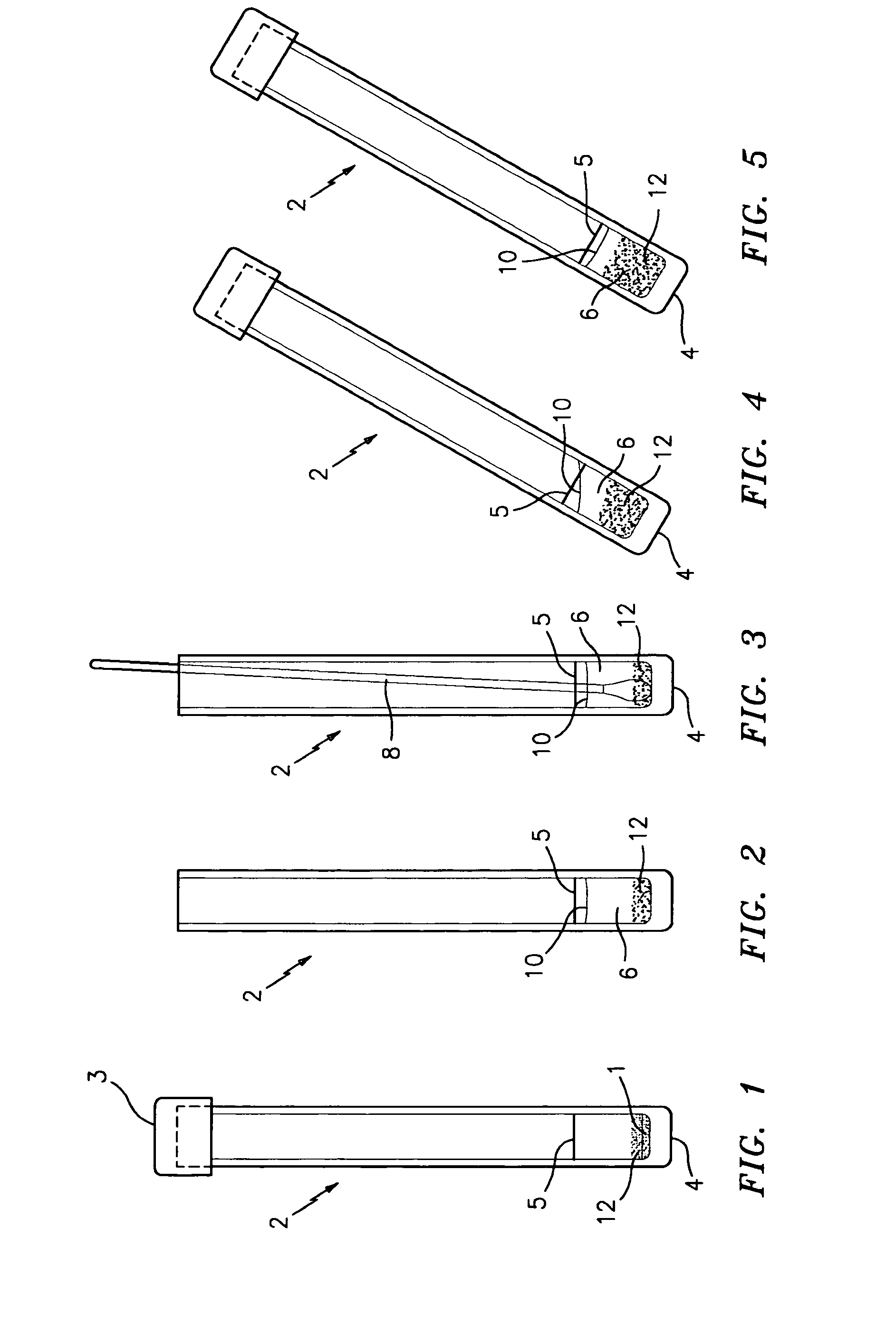Method for detecting the presence or absence of methicillin resistant staphylococcus aureus (MRSA) in a test sample
a staphylococcus aureus and test sample technology, applied in the field of methods and test mixtures, can solve the problems of s. aureus /i>can also be a source of food poisoning, severe food poisoning, and serious infection
- Summary
- Abstract
- Description
- Claims
- Application Information
AI Technical Summary
Benefits of technology
Problems solved by technology
Method used
Image
Examples
Embodiment Construction
[0029]FIG. 1 is a side elevational view of a test tube denoted by the numeral 2 which preferably has a flat bottom 4 and a top closure 3, and which contains a dry powdered test mixture 1 which is formed in accordance with this invention for detecting the presence or absence of S. aureus in a sample; e.g., a first generational biological sample. The tube 2 is also provided with a reference line 5 which indicates the amount of water to be added to the tube 2 in order to properly hydrate the powdered mixture 1 for specimen sample testing.
[0030]Acceptable hydrated test mixtures can be made using the following constituents in the ranges indicated, to create 15 ml of test mixture:
[0031]
Quantity per 15 ml ofRange per ConstituentTest Mixture15 ml Test MixtureNitrate Broth7.5ml1.0 ml-9.0 mlWater7.5ml1.0 ml-9.0 mlUracil10.0mg 1.0 mg-20.0 mgSodium Pyruvate10.0mg 1.0 mg-20.0 mgL-glutamine20.0mg 5.0 mg-40.0 mgSodium Sulfite1.0mg0.5 mg-2.0 mgRabbit Plasma100.0mg 15.0 mg-500.0 mgFibrinogen100.0mg ...
PUM
| Property | Measurement | Unit |
|---|---|---|
| temperatures | aaaaa | aaaaa |
| time | aaaaa | aaaaa |
| temperatures | aaaaa | aaaaa |
Abstract
Description
Claims
Application Information
 Login to View More
Login to View More - R&D
- Intellectual Property
- Life Sciences
- Materials
- Tech Scout
- Unparalleled Data Quality
- Higher Quality Content
- 60% Fewer Hallucinations
Browse by: Latest US Patents, China's latest patents, Technical Efficacy Thesaurus, Application Domain, Technology Topic, Popular Technical Reports.
© 2025 PatSnap. All rights reserved.Legal|Privacy policy|Modern Slavery Act Transparency Statement|Sitemap|About US| Contact US: help@patsnap.com

